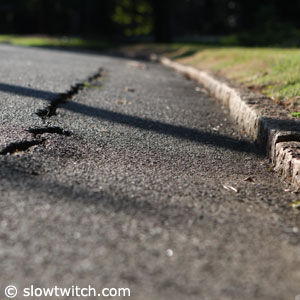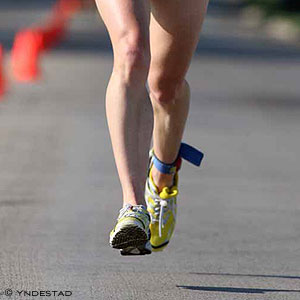The cambered road running issue

Could running on cambered (crowned) roads contribute to foot, ankle, knee or hip pain? This has been studied in recent times with several published articles in the literature. In my experience, Slowtwitch readers love scientific studies/data. So what do the studies show?
Several studies relate an increased incidence of iliotibial band syndrome (ITBS) when athletes ran a high percentage on cambered surfaces, but other large epidemiological studies found no correlation. Studies have also shown that running on one side of a crowned road, the "high side", does cause the foot to pronate more – both maximum pronation and velocity of pronation. Excessive pronation has been related to increased injury in studies for over 30 years. Other authors relate running on cambered surfaces to have an effect similar to people with a true limb length discrepancy. Since there is great debate in the literature how much inequality is typically needed to see pathology (usually over 25mm or 1 inch difference), it would seem unlikely the case with a crowned road since the slope is normally around 1.5%, but can vary greatly, especially near the edge. This corresponds to approximately an 82mm (3 inch) drop from the center of the road to the edge. But, most runners land with their feet roughy shoulder width or less apart which should further minimize the height differential. Even if the slope was doubled, a typical runner would experience only about a 4mm difference.
So we have 2 theories regarding running on cambered roads. The first is that this can create an environmental or artificial limb length discrepancy. This has largely been disproven based on the small differences mentioned above and lack of correlation between running injury even with larger, known limb length discrepancies in most studies (but not all). The second is that the higher side will experience increased rate and/or amount of pronation. This has been shown to indeed be true in 3D video motion analysis to be statistically significant vs. running on flat ground. However, one must then link this excessive pronation (which itself is poorly defined) with an athlete's chronic, overuse injury.
In my personal experience in treating runners for over 13 years, most all running injuries are simply training induced. That is to say the typical overuse issues of too much, too far, or too fast for a runner's current fitness level. I do generally ask how much or what percentage of an athlete's running is done on cambered surfaces and attempt to incorporate that information into their overall treatment plan. If the chronic injury is on the right side in the U.S. (running towards traffic), injuries that are commonly linked to excessive foot pronation (i.e. plantar fasciitis, IT band syndrome, shin splints, etc.) should be entertained. A good recommendation would be to at least minimize this component of a runner's training regimen, but it is unlikely to resolve simply with this modification. Also in my experience, some athletes are far more sensitive to subtle changes in mechanics than others. This can be seen in a cyclist where a 4mm seat height change can be noticed almost immediately, whereas another could be oblivious to a 20mm change. Triathletes generally know if they fall into this category and I would recommend changing running surfaces/direction then based on experience alone. Most other runners I usually do not advocate a change in running on crowned roads.
Dr. Rodney Roof is a physician at Performance Podiatry in Cinncinati, Ohio and often gives smart advice along those lines in our reader forum


